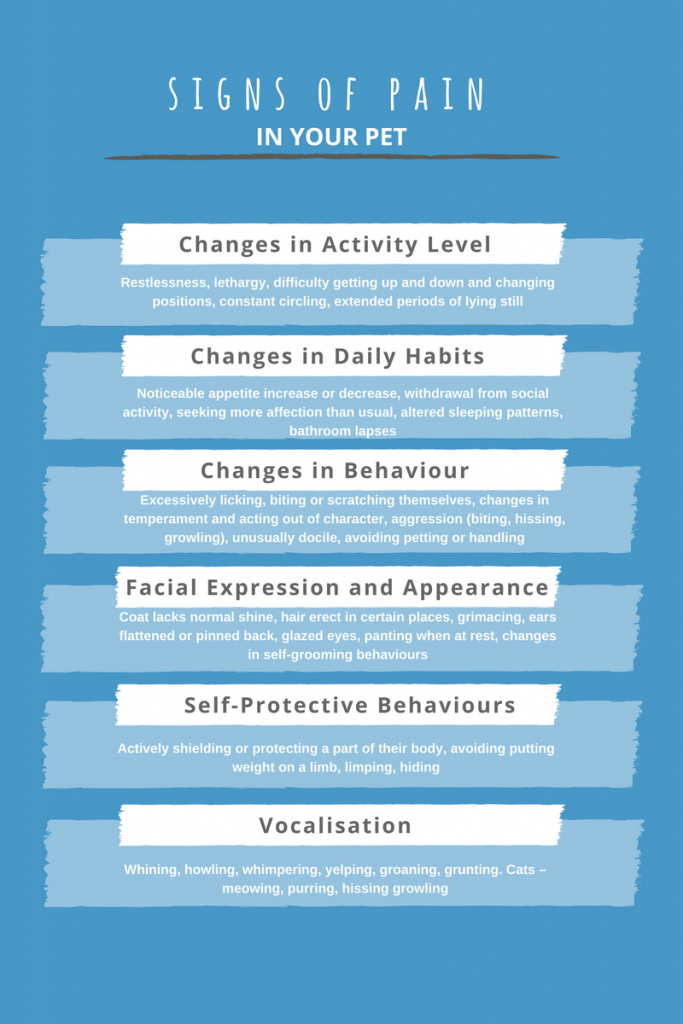We all know being in pain is no fun.
Unfortunately, what makes things difficult when our four-legged companions are in pain, is that they can’t tell us when and where they hurt. To make things worse, they are also experts at hiding their discomfort. They often won’t show obvious signs of distress (eg. yelping or limping) until their level of suffering is high. This makes it challenging for us as pet owners to know when our pets need help. Proving this was a recent study on degenerative joint disease in geriatric cats. The study found that 90% of cats involved showed radiographic evidence of degenerative joint disease, but amazingly only 4% of these cats exhibited detectable signs of lameness.
Fortunately, as supportive pet owners we can learn to identify the subtle signs and clues our pets give us when they’re not feeling well.
When it comes to detecting pain in your pet, one of the key things to look for is changes in their behaviour. You might notice that your normally sociable and affectionate dog has suddenly become irritable and avoids being petted or handled. Or if your cat is trained to use the litter box, they may start using the bathroom outside the box to avoid the pain involved in stepping into the litter tray.
These are just two of many possible examples. We’re all about ensuring quality of life for your four-legged friend, so we’ve included some more detailed guidance below with signs to look for that might mean your pet is in need of additional care and support.
Remember, you know your pet better than anyone. If your pet is displaying any signs or symptoms of being unwell it is important to book in to see your regular vet for guidance and support!





